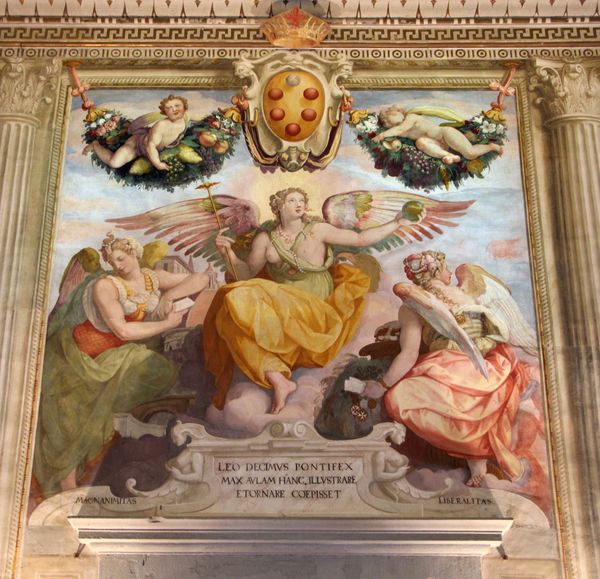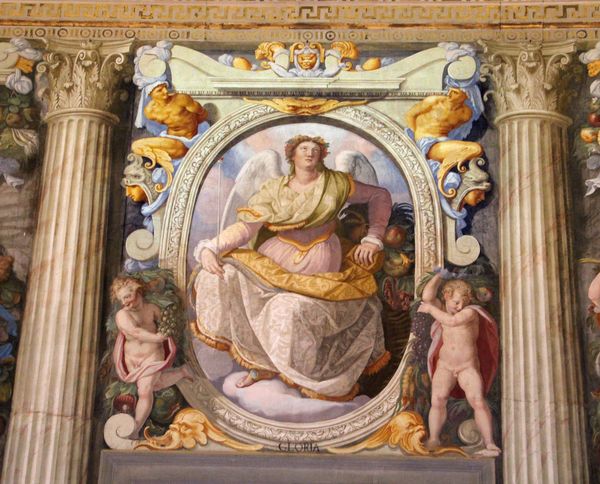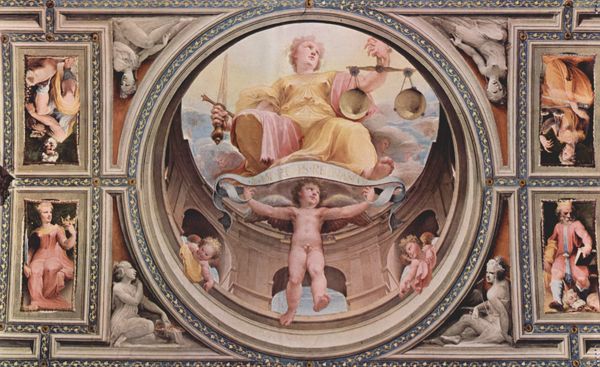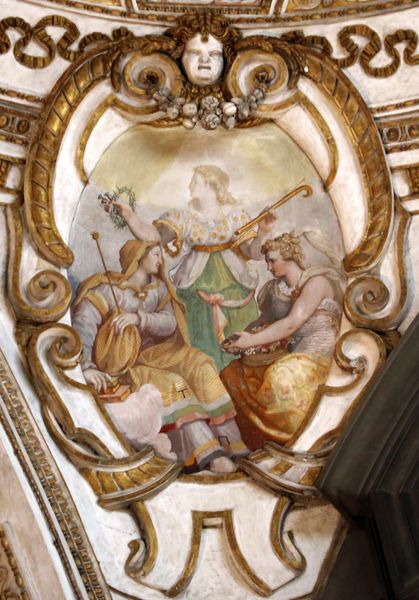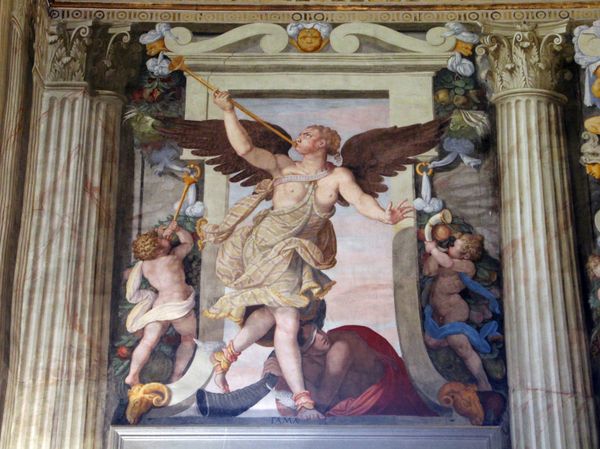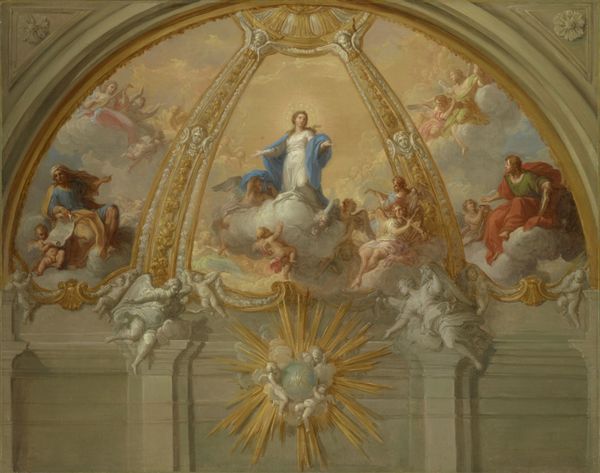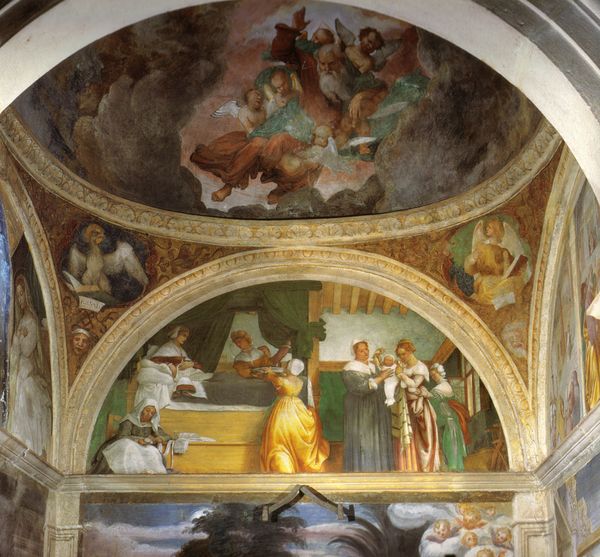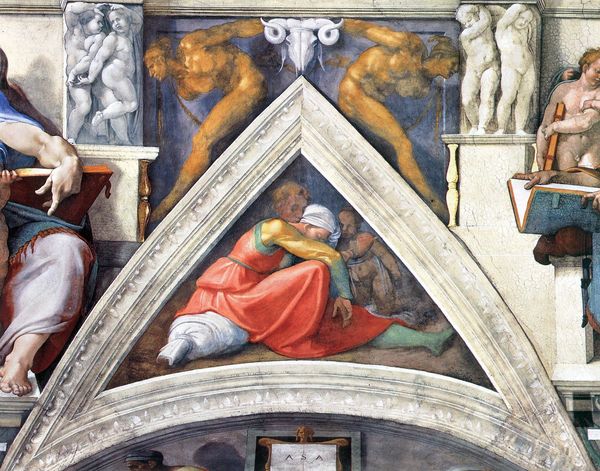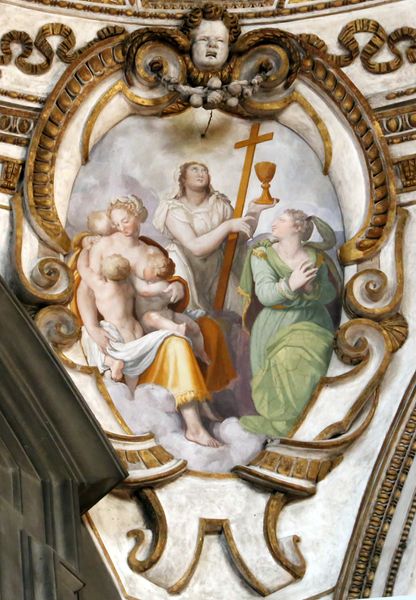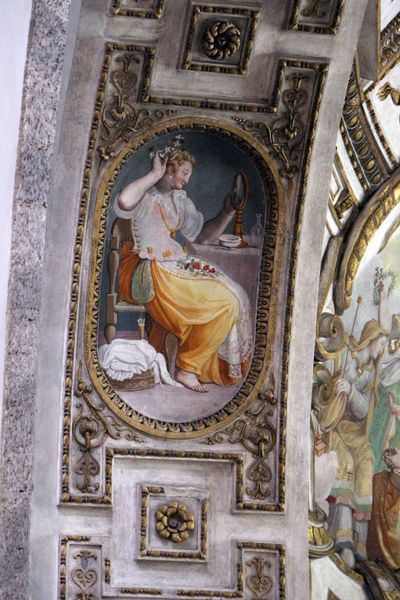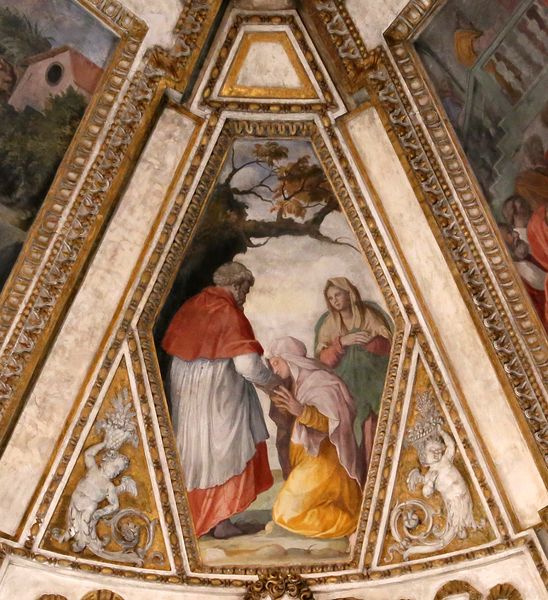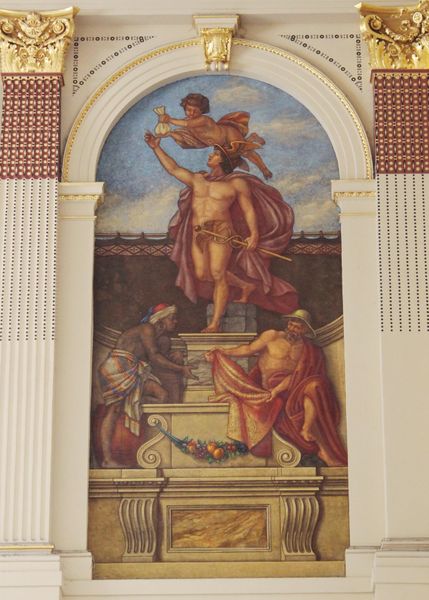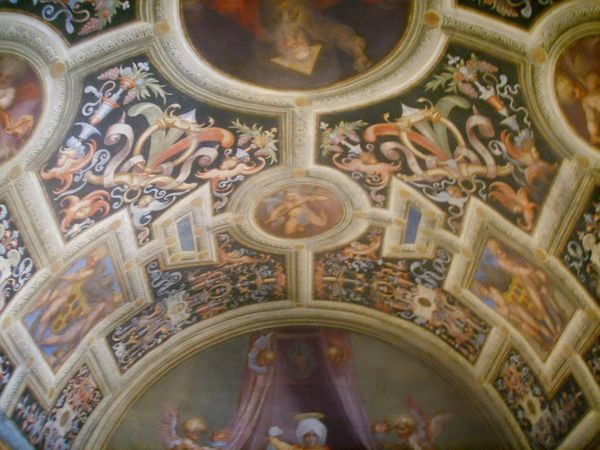
painting, fresco
#
allegory
#
painting
#
mannerism
#
figuration
#
cultural heritage
#
historic architecture
#
fresco
#
traditional architecture
#
history-painting
#
academic-art
#
decorative-art
#
italian-renaissance
#
historical building
Copyright: Public domain
Editor: So, here we have Alessandro Allori’s "Virtue", painted as a fresco in 1582. I'm struck by how the flowing robes and the soft colours give it such a dreamlike quality. It's also a very decorative piece. What is your perspective on this work? Curator: From a materialist lens, I immediately consider the labor and resources invested in creating this fresco. Fresco requires a very specific technique. The pigments, the preparation of the plaster – each choice represents an economic and social investment of that period. Editor: Oh, I never thought about it that way. The vibrant colours—did specific pigments signal something about the patron? Curator: Exactly. Ultramarine, for example, ground from lapis lazuli, was immensely expensive, denoting prestige. The very act of commissioning a fresco, a technique requiring skilled labor and costly materials, speaks to the patron's power and resources. The wall itself becomes a canvas loaded with social meaning. How was that room typically used? Editor: Presumably for display, to impress visitors with their wealth? Curator: Precisely! And the theme – Virtue – serves as a public demonstration of the patron's adherence to societal ideals. It's not just about aesthetics, but also about projecting power through the careful selection and deployment of materials and labor. Were these ideals accessible to all strata of Florentine society, or just the wealthy? Editor: That makes me think differently about frescoes now. The materiality isn't just about the beauty, it's about the whole socio-economic picture. Curator: Precisely. By understanding the material conditions of its creation, we can unpack layers of meaning that extend far beyond the visual representation. It’s about how the artwork was produced and consumed within its specific historical context. Editor: Fascinating. I’ll never look at a fresco the same way again. Thanks for enlightening me.
Comments
No comments
Be the first to comment and join the conversation on the ultimate creative platform.
